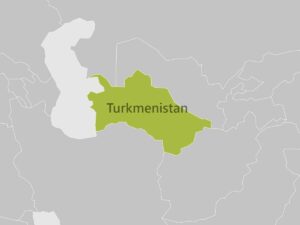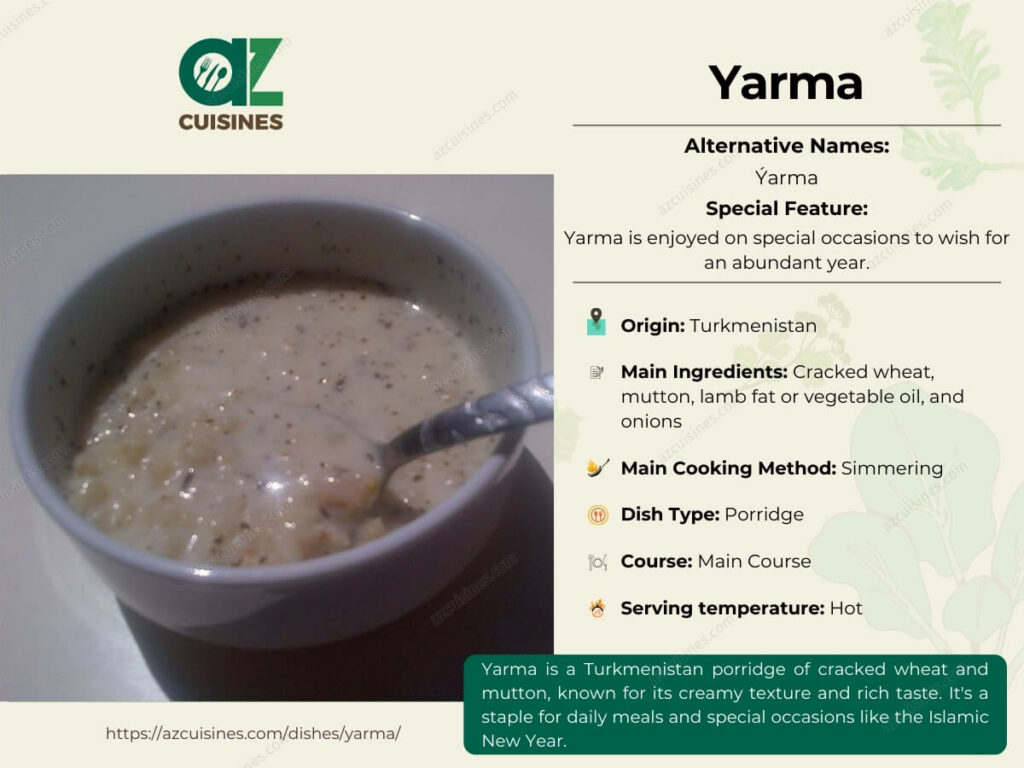#10 in Turkmenistan
Yarma: Ingredients and Preparation
Main Ingredients
Main Cooking Method
Preparation Process
Yarma: A Deep Dive
Cultural Significance
Taste
Texture
Aroma
Color
Serving Style
Serving Temperature
Accompaniment
Occasions
Seasons
Special Diets
Calories
Popularity
Popular Similar Dishes
- Kinche
- Harees
Popular Dining Area
Yarma, or ýarma, is a traditional porridge made from cracked wheat in Turkmenistan. Cracked wheat, also known as wheat groats, is a staple food in the Central Asian nation.
Traditionally, yarma is made from cracked wheat, onions, finely chopped mutton, and sheep fat, but some modern recipes replace the last one with vegetable oil. The hearty porridge is a popular choice for daily meals and special occasions, such as the Islamic New Year.
Continue reading, and I will show you the pros and cons of yarma, the questions people usually ask about the porridge, and dishes comparable to it.
Key Points
Pros and Cons of Eating Yarma
Below are the notable advantages and disadvantages of yarma:
Pros
Cons
You’ve learned about the pros and cons of yarma, but don’t stop there; check out the FAQs as well!




Adam Sam
Senior Food and Drink Editor
Expertise
Food Writer & Recipe Developer, Recipe Tester, Bartender, Cooking-video Maker, Editor In Chief
Education
Adam Sam, an experienced food writer and recipe developer, is passionate about blending diverse culinary traditions, national dishes, and innovative beverages, showcasing his proficiency in both traditional and modern recipe testing.
As the Editor-in-Chief, he elevates culinary content from street food to fine dining, focusing on Western cuisine and types of drinks at azcuisines.com, and is professional in creating engaging cooking videos that simplify complex dishes and ingredients.
His passion for food is evident in his writing, where he uniquely merges various cultures, traditions, and contemporary trends, skillfully combining classic recipes with modern cooking methods.